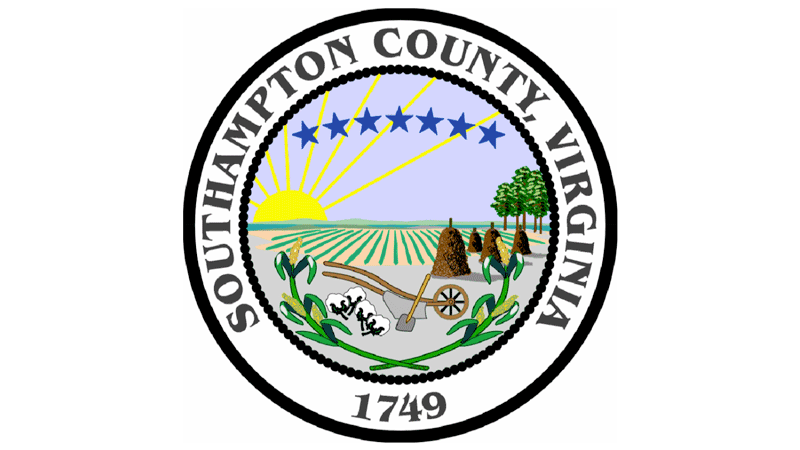Charter provides update on broadband expansion
Published 12:00 pm Thursday, August 1, 2024
|
Getting your Trinity Audio player ready...
|
Charter Communications Director of Government Affairs Eric Collins updated the Southampton County Board of Supervisors at its July 23 meeting on the broadband expansion project underway within the county, highlighting its progress and obstacles it has faced.
PROJECT COST MORE THAN DOUBLES
“We anticipated that we would get the build done on time, and we expect to get it done on time, but we’ve had some delays based on the fact that we were unable to attach to some poles due to a partnership issue that we had, which required us to go completely underground with this project — in not all areas but in specific areas,” he said.
He noted that the project was originally budgeted with the understanding that “we would be going aerial with this build.”
“By going underground, the project cost more than doubled,” he said. “So instead of it being a project cost of about $34 million, it’s now probably looking at over $60 million.”
The grant that is funding the project would not allow for any additional funds to be spent, Collins said, so Charter has stepped in to make up the difference.
“Our commitment was to get this build completed within the 36-month time frame, so therefore, whatever that additional cost is that’s doubling, Charter will be taking that cost on,” he said.
CONSTRUCTION PROGRESS TO DATE
One of the terms that Collins used to measure the progress of the broadband expansion project thus far was “passings.”
Diamond State Networks provides a definition of what “passings” means in terms of a fiber network: “Passings refer to the total number of potential customer locations — homes, businesses or institutions — that a fiber optic network passes by or is near. This statistic gives an idea of a network’s reach and its potential customer base.”
Collins noted that as of July 23 in the county, 613 passings funded by the Virginia Telecommunications Initiative grant had been activated, and 2,614 passings covered by the Rural Digital Opportunity Fund had been activated.
This meant that 3,227 passings had been activated out of 4,962 in the county.
“If you look at the mileage, it’s really astounding,” Collins said. “In the VATI area, we’ve built 351.24 miles of fiber. In RDOF areas in the county we’ve built 567 miles. For a total, we’ve built 918 miles of fiber here in the county, so we’re really pleased at what we’ve been able to accomplish.
“We anticipate that we will complete this build within the 36-month time frame,” he said, setting July 7, 2025, as the completion date for the project.
WHY SOME HOMES HAVE NOT BEEN SERVED
Collins said some county residents have called and said their home has not been served by the project, and they asked why they were not showing up on the coverage map. He explained that some households were missed because of inaccurate data from Federal Communications Commission and state maps.
He said that when Southampton County, Isle of Wight County and the city of Suffolk decided they wanted to partner on the broadband expansion project, they used FCC and state data to determine which households were being served.
Then he shared how the FCC had read the census block data.
“If one household is served within a census block, the FCC considers the entire census block being served, if that makes sense,” he said. “So you may have 30 homes in a census block, and if one home in that census block is showing served, the FCC defines that entire area as being served.”
Collins noted that he was referring to what is now the old mapping data.
“The FCC realized last year that this mapping data was not accurate to be able to get internet and broadband to every household in the United States through the (Broadband Equity Access and Deployment) BEAD Program, which is now coming into effect,” he said. “They went back and they changed the data on how the data is reported. So now the data comes back from the FCC, which filtered down to the state with the Department of Housing and Community Development where it actually shows every address point that is served and unserved. That took place after the VATI program.”
HOW UNSERVED HOMES CAN BE SERVED
Collins said hope is not lost for these few unserved households because the BEAD Program could help bring them the broadband and high-speed internet access that the VATI grant and RDOF are bringing to most homes in Southampton, Isle of Wight and Suffolk.
He noted that Charter, because it is the major provider here, is going to be applying for any unserved addresses that were missed.
Southwest District Supervisor Lynda T. Updike said, “The people that live on Delaware Road and Monroe Road that didn’t get served, what’s the prognosis for them?”
Collins said, “Through the BEAD process, we’ll be able to identify those anyway, because we’re going to have the address points of all the unserved homes that are not part of VATI and not part of RDOF.”
Southwest District Supervisor Carl J. Faison said, “In the final analysis, every household in the county should be served?”
“If we apply for BEAD for those unserved households and we’re awarded that grant, sure, absolutely, every household,” Collins said, “because that’s the whole intent is to make sure the three localities have universal service.”







